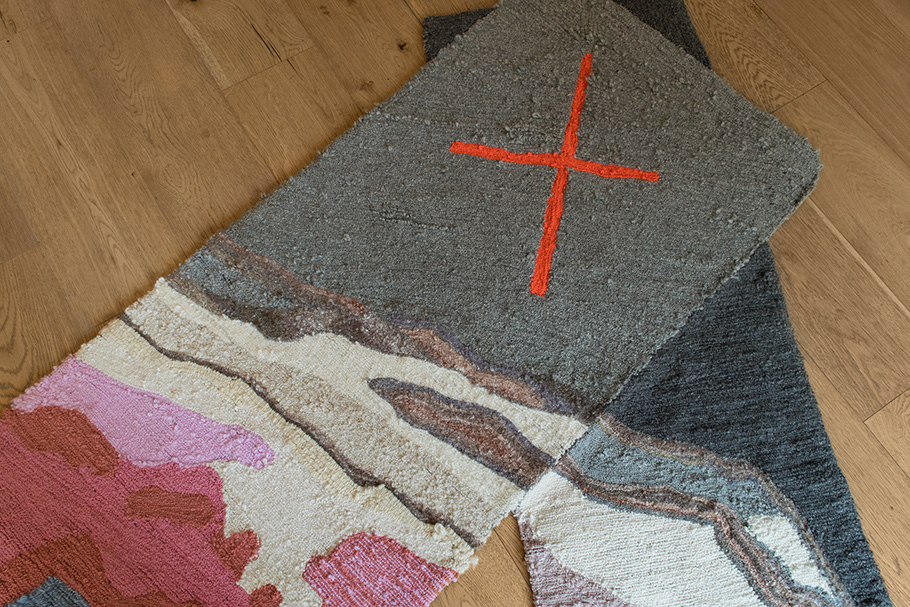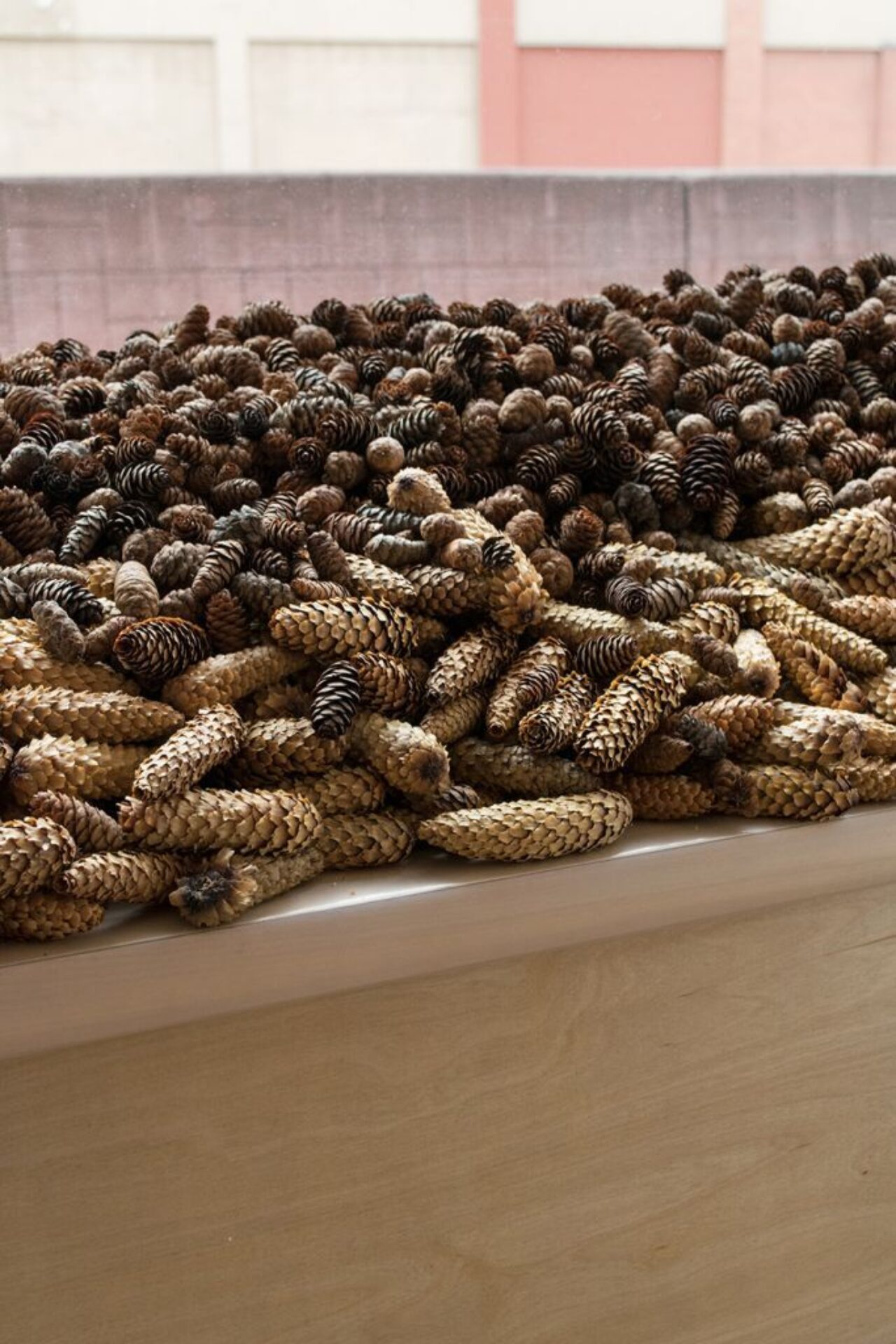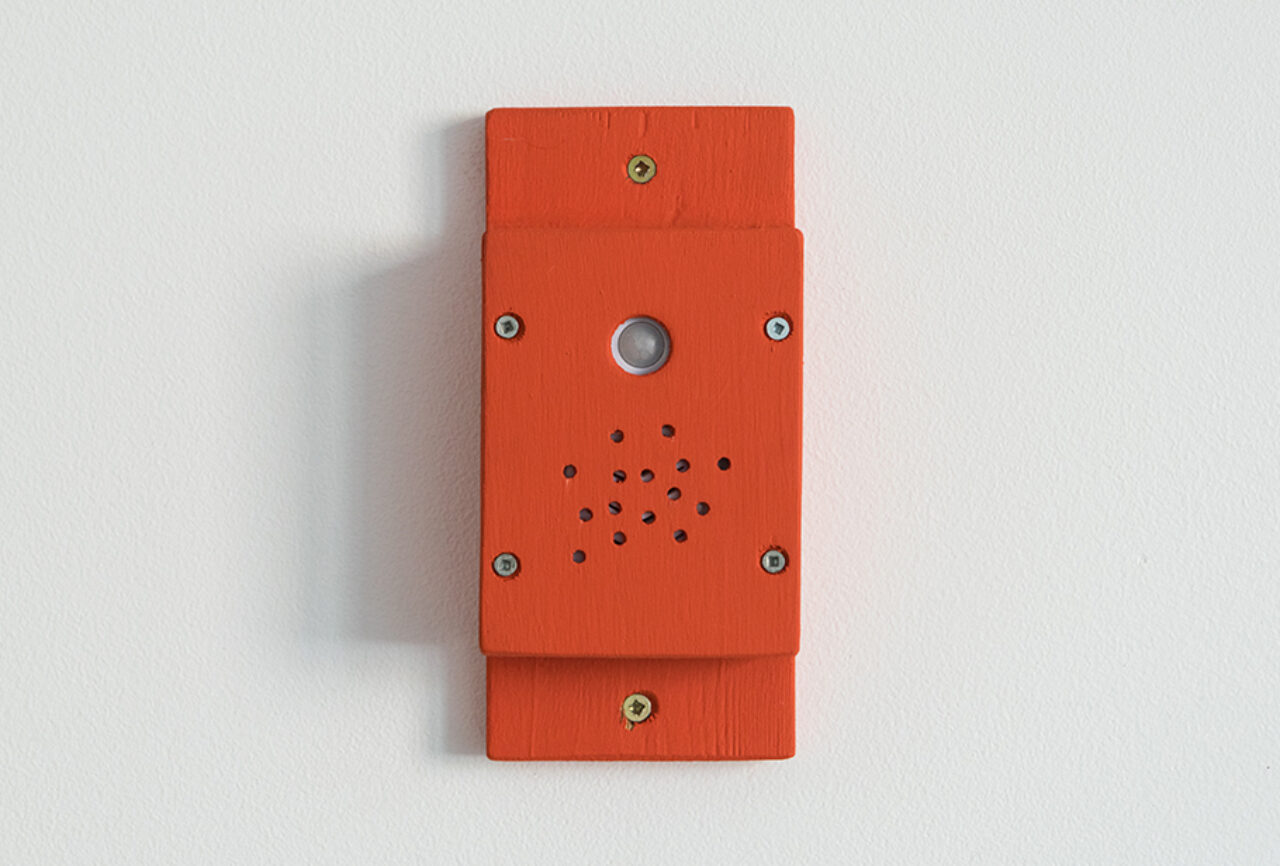‘In the Long Grass like the Ocean, Where the Ocean Used to Be’

elbow, Jennifer Brant. (Photo by Brittany Nickerson of The New Gallery / courtesy Jennifer Brant)
Posted on | Updated
Alums Jennifer Brant and Jennifer Ireland open an exhibit at The New Gallery.
Artists everywhere are adjusting the way they exhibit their work to accommodate social distancing and gallery closures.
Alums Jennifer Brant (MFA 2018) and Jennifer Ireland (MFA 2017) are no exception. At the beginning of May, their exhibition at The New Gallery in Calgary, In the long grass like the ocean, where the ocean used to be, has gone fully digital with timed releases of the artists’ work.
Having met in the Low-Residency MFA program at Emily Carr University, Brant and Ireland found a connection through both their shared supervisor, Randy Lee Cutler, and the similar interests they were exploring in the research for their practices.
“This meeting of kindreds is one of the strongest arguments for a program like the low residency MFA,” shared Brant. “I am so grateful to have had the chance to meet Jennifer. It has expanded my thinking and my practice, and facilitated a collaboration founded on thoughtful inquiry and kindness.”
The two artists embarked on an exhibition at The New Gallery in Calgary, but the novel-coronavirus disrupted the original plans for the exhibition.
As the pandemic caused creative spaces and galleries to quickly move work to the digital, the artists had to as well.
“The gallery’s efforts were entirely altruistic, motivated to protect the community as best as they could during the uncertainty of the early days of the pandemic shutdown,” said Ireland. “It was easy to support that. We had to work fast to make a lot of changes, but the main sentiment that we both carried through the process was gratitude and optimism.”

the word for world is forest, Jennifer Ireland. (Photo by Brittany Nickerson of The New Gallery / courtesy Jennifer Ireland)
“I genuinely love all of the works Jennifer Brant made for this show,” said Ireland. “It has been wonderful working alongside her. It was a real pleasure to see elbow in person to enjoy the qualities of the layering of colours and textiles, and I can’t wait to see how the kin we carry unfolds through its online sharing.”
Ireland also noted Brant’s bird song piece bird conversation: savannah sparrow might be her favourite of Brant’s work by a narrow margin due to the unique process behind it.
“It is poetic, playful, subtle and merits thoughtful investigation and contemplation,” said Ireland.
“I would have to say that I have been deeply affected by Jennifer Ireland’s the word for world is forest,” said Brant. “I am always amazed by work that shifts my perception of the world and invites me to notice things, to interact with kin differently. This piece has brought my attention to similar trees here in Vancouver, and has changed the way I spend time with them.”
Aside from exhibitions moving online, artists are finding themselves trying to develop new ways of working with our new normal looking like it will extend longer than others in some parts of the country.
We asked the artists what it’s been like adjusting to studio life within the pandemic.

bird conversation: savannah sparrow, Jennifer Brant. (Photo by Brittany Nickerson of The New Gallery / courtesy Jennifer Brant)
“At first, it was really difficult, I felt upturned,” said Ireland. “Everything that I thought was important before suddenly seemed less important than the pandemic. As things unfolded, and levelled out here in Western Canada, I began to see the patterns in the situation with Covid-19 and how they reflected other parts of contemporary life that I am concerned about like climate change and responsibility to the community in both a close and broad sense.”
With all the changes that occurred, Ireland found that she made most of the work for In the long grass like the ocean, where the ocean used to be in the weeks leading up to the May opening.
“I was integrating ideas and feelings about the current pandemic with contemporary life,” said Ireland. “I was asking questions such as by staying home and consuming less, how can we apply what we are learning to support efforts to reduce climate change and with this time of increased social responsibility how can we take what we are learning and extend it to other life on this planet?”
Brant also found herself investigating her feelings.
“It has been interesting to navigate the disparate feelings that have emerged during this time. There has been so much uncertainty that, like Jennifer, I have questioned what is important,” said Brant.
“I was fortunate that my studio space remained open, with strict protocols in place, and I was able to continue working. I had to let go of site-specific and experiential work for the exhibition and this led to my reconfiguring ideas and pushing myself, both necessitated by the short time frame.”
“One line of inquiry that opened up for me as a direct result of Covid-19 was thinking about the beneficial microbes we are losing, as we rightfully protect ourselves and others from possible transmission through handwashing and sanitizing,” Brant continued.
“As one part of my current practice centres around the microbial world, specifically soil and gut microbes, I began to grieve the loss of that tiny kin that we carry with us, to examine what we can consider acceptable losses, and this informed my work.”